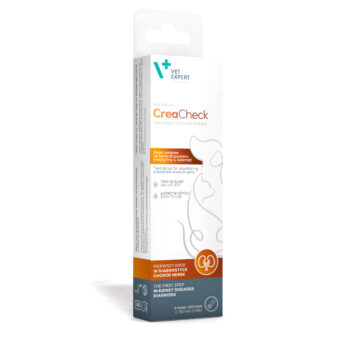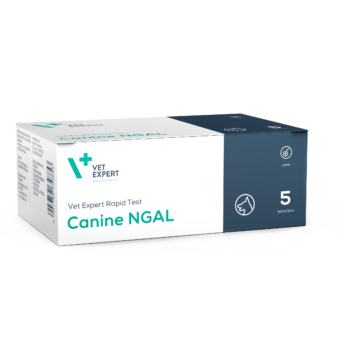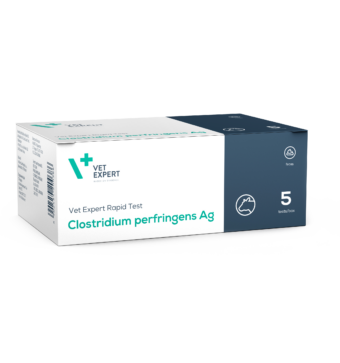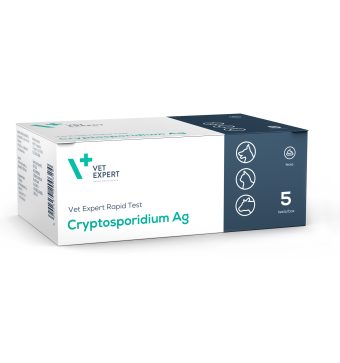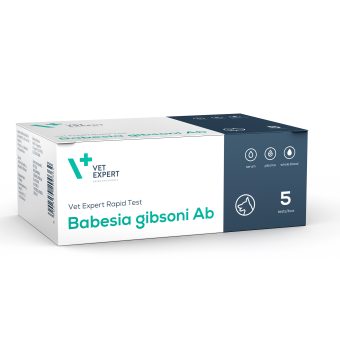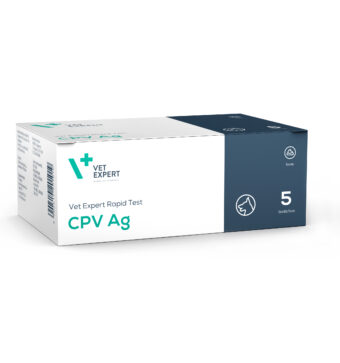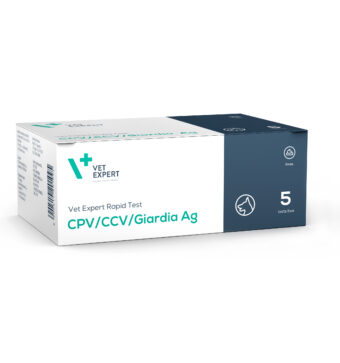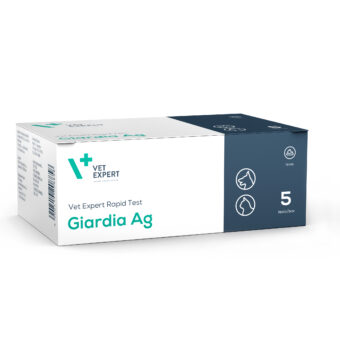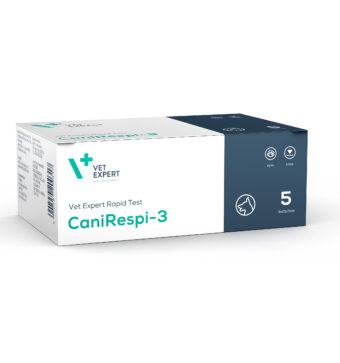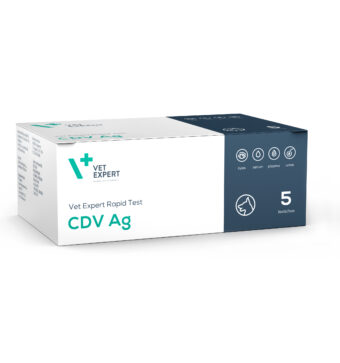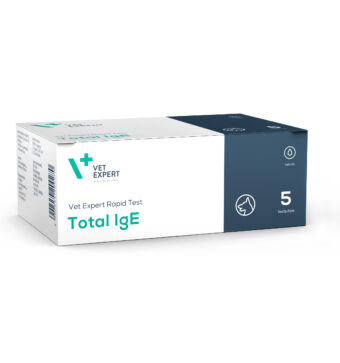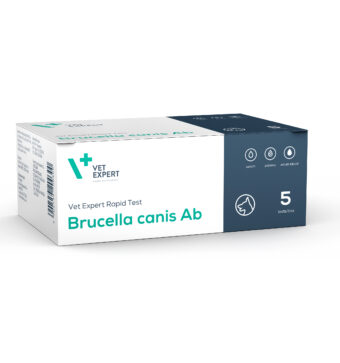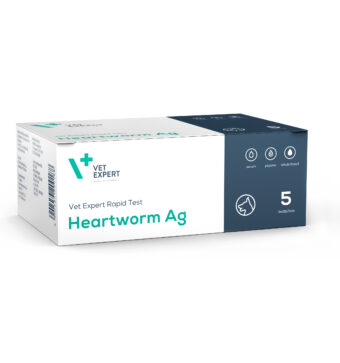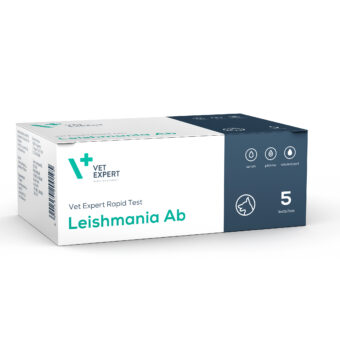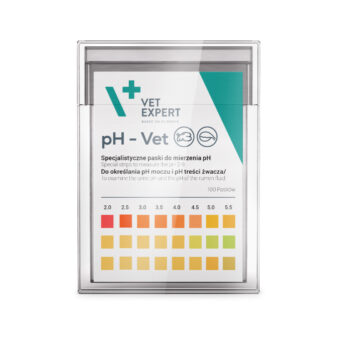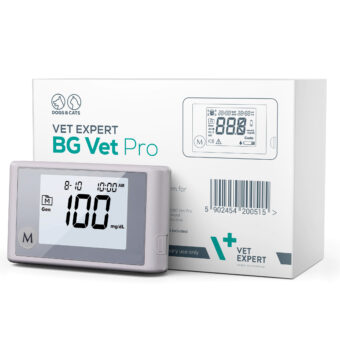Due to the dynamic epidemiological situation in the world, many carers of dogs and cats are concerned about their health and that of their four-legged friends. Pet owners are also concerned about the risks of transmitting the SARS-CoV-2 coronavirus by dogs and cats. We cover this topic in more detail in our Coronavirus FAQ.
However, we must remember that there are dog and cat diseases that can affect human health. In our article, you will find out:
- what viral diseases you may encounter in your pet
- whether viral diseases of dogs and cats are dangerous to humans
- how to prevent them
We already know quite a lot about the human variant of the SARS-CoV-2 coronavirus. We know that:
- it spreads by airborne droplets
- the source of human infection is another human
- infection occurs through coughing, sneezing or talking
- in the environment – depending on the medium – the virus survives from several hours to 5 days
It has also been proven that the genome (i.e. genetic information) of this virus is similar to the already known varieties of animal coronavirus. Fortunately for us, there is no evidence that humans can catch the infection from an animal.
In our article, we would like to introduce you to the most popular diseases of dogs and cats that may or may not have a direct impact on human health.
CORONAVIRUS in CATS
Disease type: viral
Feline coronavirus infections are very common among cats. Cats become infected from each other, mainly indirectly through contact with faeces or objects such as litter boxes, bowls, and through direct contact through droplets. The most vulnerable to coronavirus infection are juveniles, which often become infected by their mothers.
In terms of pathogenicity, there are two types of coronavirus:
- intestinal, which causes mild and temporary gastrointestinal symptoms such as diarrhoea, vomiting and a slight increase in body temperature.
- the so-called phylogenic, which arises from a mutation of the intestinal type and affects 5-10% of the cat population previously infected with the common coronavirus. Such a mutation is caused by stress, being in cat clusters or age (young cats up to 2 years old most often suffer from disease). The infection is caused by a disease called FIP, i.e. infectious peritonitis, which can take two forms: exudative and so-called dry.
Unfortunately, both are progressive and fatal. The wet form is accompanied by the presence of fluid in the abdominal cavity, chest or, less commonly, the pericardial sac, making the symptoms more visible to the owner and the veterinarian can become suspicious of the disease more quickly. It is an acute disease. The non-exudative form, on the other hand, is chronic and can be properly diagnosed only after the death of the animal.
How can I prevent my cat from becoming infected with the coronavirus?
To help prevent infections, the following can help:
- testing of kittens just before or after giving birth for antibodies against feline coronavirus (anti-FCoV)
- early weaning of the litter from the mother having anti-FCoV antibodies (up to 5-6 weeks)
- absolute isolation of the litter with its mother from other cats
- testing of kittens over 10 weeks of age for the presence of anti-FCoV antibodies
- reducing the number of cats in the cluster
- high hygiene of the litter boxes: (one litter box for 1-2 cats), emptied daily, disinfected once a week, placed at a great distance from the bowls.
Treatment: so far, FIP is considered an incurable and 100% fatal disease. In recent years, a new hope for an innovative treatment with a substance has emerged, which in the phase of clinical trials carried out in the USA shows great effectiveness in reducing the symptoms of the disease. Unfortunately, the drug is not yet registered and we will have to wait for it.
Vaccinations: NONE
Is feline coronavirus dangerous to humans: NO
CORONAVIRUS IN DOGS
Disease type: viral
Canine coronavirus is a generally mild, highly contagious disease of dogs, with the most common manifestation of gastroenteritis. Here, too, we distinguish two subtypes of the virus:
- type I, intestinal
- type II, causing pneumonia
In both cases, infection is oral and infected dogs shed the most virus in their faeces. The coronavirus multiplying in the digestive tract causes diarrhoea which threatens puppies most, because they are more prone to dehydration. Puppies also handle type II viruses worse, which may result in death. Adult dogs, on the other hand, are usually asymptomatic.
Treatment: In dogs, there is also no causal treatment for coronavirus and treatment is to manage the symptoms of the disease.
Protective vaccinations: there is a possibility of prophylaxis with a vaccine for puppies.
Fortunately for us, all varieties of the coronavirus are relatively little resistant to environmental conditions and are damaged by commonly used disinfectants, detergents and UV rays.
Is dog coronavirus dangerous to humans: NO
RABIES
Disease type: viral
Rabies is one of the most dangerous zoonoses. It is a disease caused by a virus from the Rhabdoviridae family, incurable and deadly for humans, and as such it belongs to the infectious diseases that must be controlled.
It is a disease that is transmitted through direct contact (bite) with an infected animal. Man can get infected from mammals infected with this virus, in particular from bats. The virus is most abundant in the saliva of a sick individual. Occasionally, infection occurs through scratching, e.g. by cats or bats.
Treatment: none
Rabies virus, after approximately 3 months of asymptomatic incubation, causes acute encephalitis. It lasts about 7-9 days and always ends in death.
Symptoms come on suddenly and include strabismus, uneven pupil dilation, abnormal coordination, behaviour change, aggression or depression, drooling, difficulty swallowing, followed by paralysis, among others. respiratory muscles.
If an animal has bitten a human (whether or not vaccinated), it will have to undergo a 15-day observation period. Most often it consists of three visits to the veterinary office (on the 5th, 10th and 15th day).
There are no reliable studies that can confirm rabies before the animal dies.
Vaccinations: Fortunately, very effective vaccines against rabies are available. In Poland, dogs must be vaccinated annually. However, cat owners should also vaccinate their pets. Animals suffering from rabies, including bats and squirrels particularly sensitive to it, are an easy target for hunting cats as a result of the development of the disease symptoms. Therefore, cats, especially outdoor cats, should also be vaccinated against rabies.
Is rabies dangerous to humans: YES
A person bitten by an animal should immediately wash the wound with soap and water, then disinfect it, and then report the bite to a doctor. People are relatively insensitive to the rabies virus, so often washing the wound protects against infection.
KENNEL COUGH (canine infectious tracheobronchitis)
Disease type: viral – bacterial
Very contagious, viral-bacterial, acute or subacute inflammation of the respiratory tract in dogs.
Kennel cough is a common disease worldwide and affects dogs of all ages. The source of infection is sick dogs, and the infection itself occurs via droplets. Kennel cough is most common in larger animal communities – housing estates, dog parks, kennels. Its spread is caused by high humidity, poor ventilation and stress in animals, which causes a decrease in immunity and facilitates the penetration of the virus.
Symptoms in your dog that should concern you:
- dry, sharp, paroxysmal cough
- sometimes the animal chokes and demonstrates gagging
- sometimes the cough becomes high-pitched (swollen vocal cords)
- coughing occurs easily with changes in temperature, after exercise, and when touching the dog’s neck
- fever
If you notice similar symptoms in your dog, visit your veterinarian who will most likely collect nasal and throat swabs for laboratory testing.
Treatment: symptomatic
The dog should be kept in warm, not too dry rooms. The animal should be kept calm, without unnecessary effort that will aggravate the coughing attacks. Your veterinarian may recommend an antibiotic and inhalations to fasten patient’s recovery.
Preventive immunization: an intranasal vaccine against kennel cough is now available.
Is kennel cough dangerous for humans: NO
PARVOVIROSIS IN CATS (FELINE PANLEUKOPENIA)
Disease type: viral
Highly contagious disease of dogs and cats caused by parvoviruses (canine CPV-1, CPV-2 and feline FPV) – viruses extremely persistent in the external environment (canine parvovirus at room temperature can survive for about 5 months, and feline even up to a year). These viruses are also resistant to disinfection. Canine strains are contagious to dogs, while cats are susceptible to both canine CPV-2 strains and FPV.
- infection most often occurs through contact with the faeces of infected animals
- The disease fully develops in young, unvaccinated dogs (6 weeks to 6 months of age) and cats
- symptoms appear about 5 days after infection.
The virus attacks the cells of the intestine, heart and bone marrow, causing gastroenteritis, diarrhoea, vomiting, bone marrow damage, fever (often also hypothermia), dehydration, circulatory disorders and neurological disorders.
In cats, a typical effect that gives the disease its name is bone marrow damage, resulting in an almost complete absence of leukocytes in the blood – panleukopenia. Parvovirus can cause miscarriage in pregnant cats and prenatal infection, resulting in impairment or death of kittens. Unfortunately, the disease ends in death in about 50% of young animals.
The diagnosis of parvovirosis/panleukopenia is performed in the first 9-10 days after infection with tests for the presence of the virus in the stool.
Treatment: in the early stages of the infection, anti-parvovirus antibodies containing serum should be administered. Further treatment is symptomatic and consists in counteracting the devastating effects of multiplication of the virus:
- intensive irrigation and replenishing of electrolytes,
- antibiotic therapy,
- antiemetic and protective drugs,
- interferon
Preventive vaccination: Effective vaccinations are available against canine parvovirus and feline panleukopenia.
Is parvovirosis dangerous to humans: NO
Important! Due to the high persistence of the virus in the environment, humans may contribute to the spread of parvovirus (e.g. on footwear).
FIV (feline immunodeficiency virus)
Disease type: viral
FIV (Feline immunodeficiency virus) is a virus that causes a decrease in immunity in cats, which is very similar to infection with the human immunodeficiency virus – HIV.
Among cats – about 7% of cats in Poland have had contact with this virus (having antibodies). There are over twice as many males with anti-FIV antibodies as there are females. Anti-FIV antibodies are three times more common among non-castrated cats than in castrated cats.
A model cat suspected of having FIV is an old, outgoing, uncastrated male with a neglected appearance. Why? Because an outgoing cat, and especially a cat defending its territory, an uncastrated male is exposed to fights with other infected cats. As a result of slowly developing immunodeficiency, the cat will suffer from mycosis, demodicosis, mites infestation, and lymphomas. The condition of a cat infected with FIV is the result of a slowly progressive disturbance in the immune system.
Diagnostics: the disease is suspected in cats with various types of recurring health problems. We also analyze the possible belonging to a risk group. Lymphomas and leukaemias can also develop during the disease. Routine diagnosis consists in performing a rapid test at the veterinary clinic. Kittens can get the antibodies from mother and therefore, kittens under 6 months of age are not tested for the presence of antibodies. In some cats which are badly devastated by the disease, antibodies against FIV may not be present in the blood.
Treatment: symptomatic
It is not necessary to isolate a cat from other cats in the house, as long as they are not fighting with each other. It is advisable to keep the cat at home. Additional recommendations include castration and a good diet.
The disease is incurable.
Protective vaccinations: vaccinations against FIV belong to additional vaccinations.
Is FIV dangerous to humans: NO
The FIV itself is not dangerous to humans. However, an immunocompromised cat can pose a serious threat to people with decreased immunity (e.g. after chemotherapy, AIDS patients), pregnant women, newborns, children and the elderly, as it also has associated infections (mycoses, bacterial infections).
FeLV (feline leukemia virus)
Disease type: viral
Feline leukaemia virus (FeLV) causes chronic feline disease with disruption of hematopoietic processes, decreased immunity, and neoplastic processes.
Studies report a relative low prevalence of the disease worldwide. In North America, FeLV prevalence ranges between 2.3% and 7.5%, in Australia is 2%, whereas in Europe it is slightly higher (3.6–15.6%). The virus is spread mainly in catteries and shelters that concentrate large numbers of cats in a relatively small area.
Infection occurs mainly through contact with the saliva of an infected cat. It can be a bite, but also just long-term close contact (licking, playing, mutual hygiene). Kittens up to 16 weeks of age are most susceptible to infection. Older cats are much less sensitive. The course of the disease depends to a large extent on the cat itself, on its predisposition to cancer, the state of the immune system, and past infections.
Symptoms which may indicate feline leukaemia:
- enlarged lymph nodes
- fever
- pale gums (anaemia)
- sleepiness
- immunodeficiency (infections accompanying e.g. pneumonia, mycoses)
- lymphomas
- leukaemia
- sudden onset of breathlessness (lymphomas)
- a blockage in the gut (lymphomas in the abdomen)
Despite its name, the virus does not always cause leukaemia or lymphoma. The development of the tumour depends on the predisposition of the cat itself, and the virus only stimulates the development of the disease.
Diagnostics consists of performing a rapid diagnostic test at a veterinary clinic. Rapid test detects the antigen of the virus only during the viremic phase of the infection. A positive cat should always be tested twice, 4 months apart to see if the virus excretion was transient or permanent, as it affects the prognosis. Positive cat should be isolated from other non-infected cats.
Treatment is primarily symptomatic: antibiotics, hydration, anti-parasitic prophylaxis, blood transfusion. Chemotherapy is used in the treatment of cancer. A good diet is also recommended, avoiding raw meat, milk, and eggs.
Preventive vaccinations: FeLV vaccinations are additional vaccinations. Infected cats must not be vaccinated.
Is feline leukaemia is dangerous to humans: NO
As in the case of the FIV virus, the FeLV virus itself is not dangerous to humans. However, an immunocompromised cat can pose a serious risk to people with a decline in immunity.
We hope that our article introduced you to the most common viral diseases of our four-legged friends. In the next section, we will describe the most common parasitic diseases that you may encounter with your pet. This knowledge will allow you to properly deal with your pet to protect them and yourself from infection.

